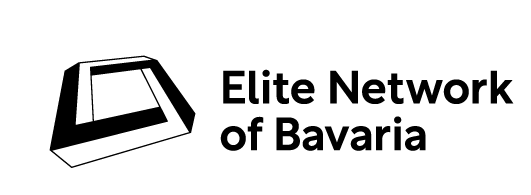
Kirsten Twelbeck
Workshop-Review: „Videographic Essay & Critique” With Prof. Jacob Smith
written by Felix Keilhack
Organisers: Pia Wimmer, Pd. Dr. Kirsten Twelbeck
On December 11, 2024, the „Videographic Essay & Critique“ workshop, organized by Pia Wimmer and Kirsten Twelbeck, featured guest speaker Prof. Jacob Smith and took place at the WZU (Wissenschaftszentrum Umwelt) in Augsburg. The workshop introduced participants to the potential of videographic essays as versatile, inspirational, and experimental tools for critique and reflection on preexisting films. Prof. Jacob Smith, a Professor in the Department of Radio-Television-Film and co-founder of the MA in Sound Arts and Industries at Northwestern University, shared valuable insights on how to apply videographic essay methodology to academic fields. This article summarizes his key tips and techniques.
What is a Videographic Essay?
In today’s media landscape, audiovisual essays exist across a broad spectrum, spanning both consumer and academic contexts. The term „video essay“ is most commonly associated with popular media culture. These works often serve as reframing compilations of various video clips, such as reaction videos, and frequently engage with meme culture. Modern video essays incorporate techniques like hypernarration and supercuts to captivate viewers’ attention, offering an immersive and highly informational experience.
In contrast to popular video essays, the „essay video“ approach is adopted by academic scholars seeking to distance themselves from mainstream media’s entertainment-driven objectives. Instead, they strive for intellectual rigor and validation. Academic essay videos blend film and scholarly analysis, incorporating textual support to create a hybrid form of science and media. One notable platform for peer-reviewed videographic content is [in]transition, an online publication dedicated to such works.
Beyond the realms of entertainment and academia, I claim that the „ethnographic essay“ occupies a unique space. This form is characterized by its artistic and poetic nature, making it distinct from the other two. While ethnographic essay films aim for more profound self-reflection and an acknowledgment of the filmmaker’s perspective and the medium’s role, they continue to fight for recognition as legitimate tools within academic research. I highly recommend checking out the work of Prof. Mattijs van de Port, a visual anthropologist and filmmaker at the University of Amsterdam, whose work exemplifies the rich potential of this approach.
Although distinctions exist among these three categories, they also share significant overlaps. For instance, while video essays often circulate on YouTube and essay videos on platforms like Vimeo, the techniques and purposes of each are not mutually exclusive. In fact, for the purposes of science communication, a hybrid approach that blends elements from all three types can be particularly effective for broadening audience engagement.
DIY Tips & Tricks for Creating a Videographic Essay
Prof. Jacob Smith emphasized the unique methodological value of videographic essays. They not only enable scholars to recognize previously unseen details and patterns in existing films but also offer the chance to „defamiliarize“ the footage, thereby challenging the original film’s intent and creating new perspectives through abductive reasoning. He shared several practical exercises to inspire participants to create videographic essays of their own:
- The „Videographic Pechakucha“ (or „Video Haiku“)
- This exercise involves selecting any film and reorganizing its structure to create new meaning and narrative coherence. By reordering sequences, new perspectives and interpretations of the source material can emerge.
- One of my favorite examples is the videographic essay „Nothing“ edited by LJ Frezza, which shows every shot from the sitcom „Seinfeld“, in which no human is in the frame and nothing happens.
- The videographic essay „Ripple, rustle, shimmer and shake: the cinematic rapture of grass“ edited by Anne Rutherford compiles footage of different films to centralize grass as the subject of the video and therefore invokes a change of perspective.
- The „Videographic Epigraph“
- This exercise begins with the selection of a meaningful quotation that serves as an introduction to a particular film scene. The chosen quotation provides a thematic frame, guiding the audience’s interpretation of the following footage.
- Watch Jordan Schonig’s Epigraph to get a sense of how to combine text with film scenes to create new meaning.
- The „Voiceover Exercise“
- This activity invites creators to experiment with auditory commentary. By adding a voiceover, participants can introduce analytical, narrative, or poetic elements to the visuals. Reflection on this exercise reveals the profound influence that voice—through accent, tone, idiolect, or gender—has on the narrative’s reception.
- The „Multi-Screen Composition“
- This technique is ideal for comparative analysis. Multiple video clips are displayed simultaneously to contrast, discuss, or accumulate examples. Creators may choose between two modes:
- Cumulative Mode: Presenting multiple clips simultaneously as an accumulation of examples.
- Recursive Mode: Displaying the same video clip multiple times, allowing for close examination of details, contradictions, or complications that might otherwise go unnoticed.
- A fun examples of a Multi-Screen Composition is Sara Preciado’s video essay „La La Land – Movie References„.
Read the full article here: https://diekulturschock.de/2024/12/12/workshop-recap-videographic-essay-critique-with-prof-jacob-smith/
